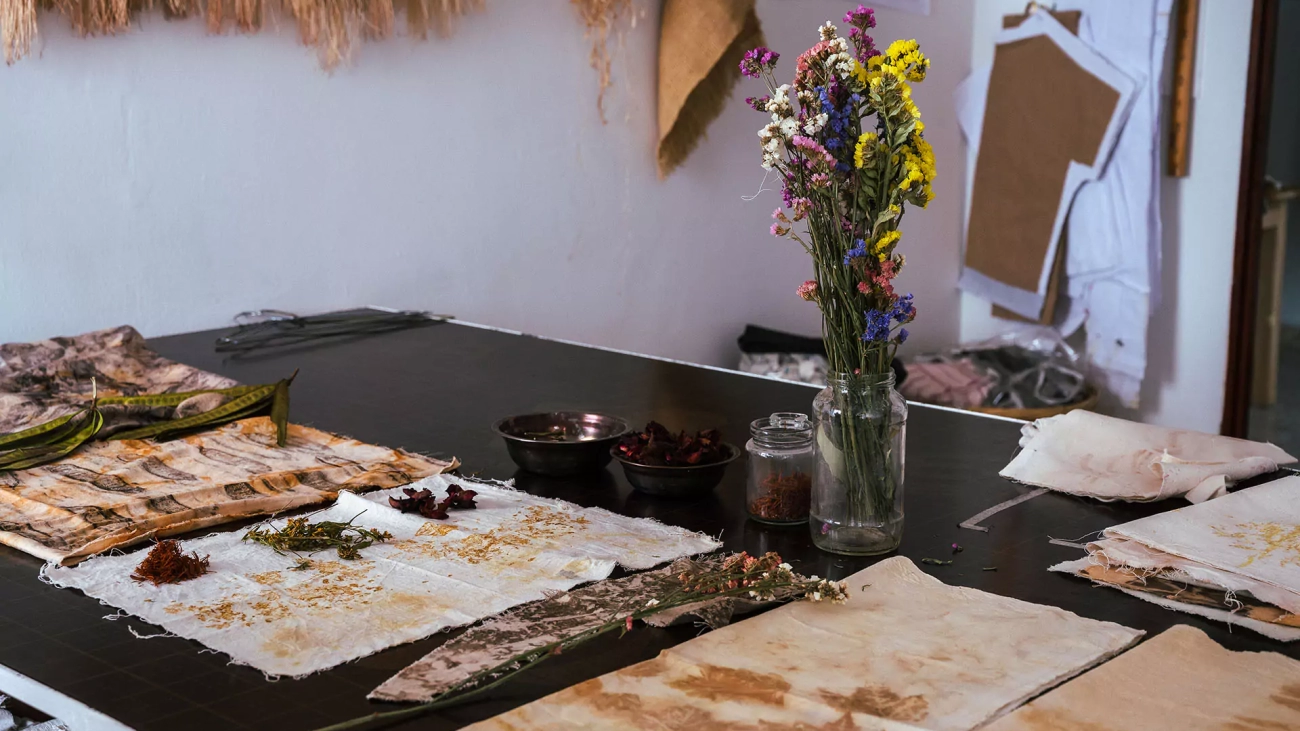EVENTS
ECOPRINT WORKSHOP
MANOJULY 1 – 2
Natural dyes are organic pigments extracted from plants, insects, and minerals that, due to their chemical characteristics, dye natural fibers such as cotton, jute, wool, hemp, silk, etc.
Throughout history, humans have sought to cover their bodies, and from the need for warmth, clothing colors and patterns emerged as one of the key factors that greatly impact and define garment design. Archaeologists have found evidence of textile dyes dating back to the Neolithic period. For example, natural dyes have been used in Chinese textiles for over 5,000 years. Until the second half of the 19th century, all dyes used for coloring fabrics were of natural-organic origin.
However, with the arrival of the industrial revolution and the development of synthetic materials, which were more cost-effective and rapidly produced, natural dyes were gradually replaced by synthetic dyes designed to adhere to the new petroleum-derived textiles.
Currently, consumers have become more aware of their health and the environmental impact of synthetic dyes in the fashion industry, leading to a growing demand for products that use sustainable dyes.
The main objective of this workshop is to explore and experiment with local flora to create compositions using leaves, roots, fruits, flowers, seeds, metals, and woods. Botanical printing allows us to transfer shapes and colors directly onto the fabric, enabling designs that other techniques do not allow.
In this workshop, we will learn how to prepare a cotton mordant so that the shapes and colors can be fixed using pressure and heat. The most common mordants are table salt, alum, iron, and tannins. Alum is generally the most commonly used mineral, followed by
iron, and they can be safely used and removed from garments.
The benefits of this technique are:
– The use of biodegradable, renewable, and sustainable materials, which means they do not pollute aquatic ecosystems and contribute to closing the life cycle of textile products.
– It offers a unique and diverse range of colors.
– Unlike industrial direct prints or sublimation, botanical printing is the most environmentally friendly option due to its low toxicity and lower impact on natural resources.

With the opening of the exhibition on textiles from Mexico, we will also have LAYA, artist also exhibiting in the exhibition who will give a workshop on ECO PRINT, through experimenting with plants, metals, fruits and flowers, the objective will be to learn how to prepare the fabric to dye it with pressure and heat.
Thanks to the variety of the element used, the eco print allows dyeing unique shapes and colors, so the goal is that you take your own unique piece of the workshop.
(The workshop will last 5 hours and all materials are included).
Cost per person: $200
July 1st and 2nd
11:00 am to 4:30 pm

